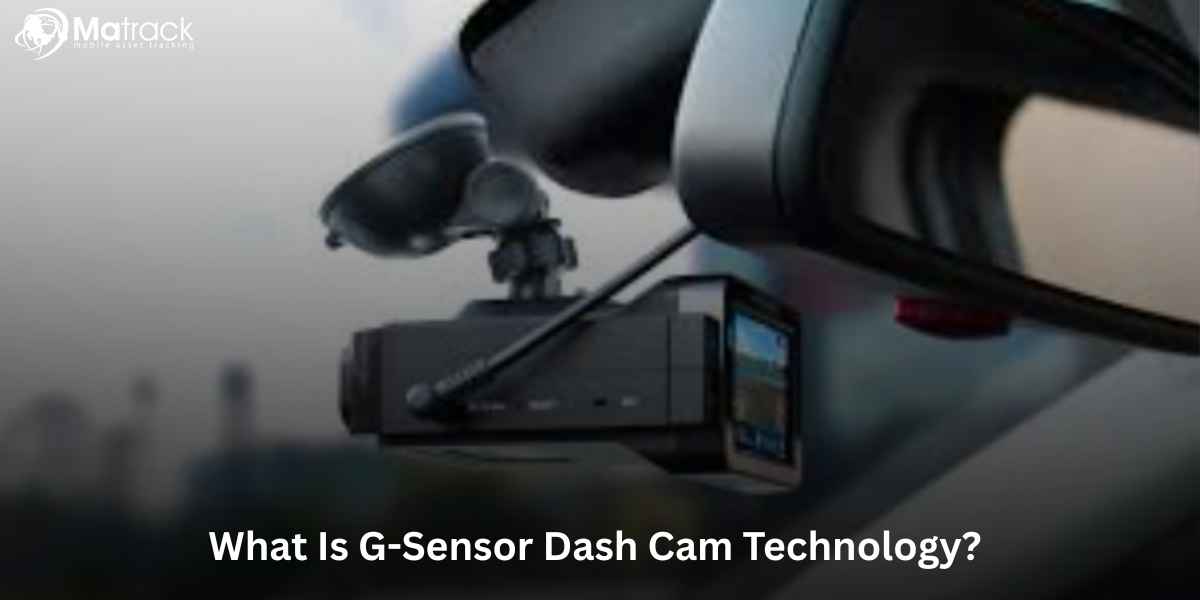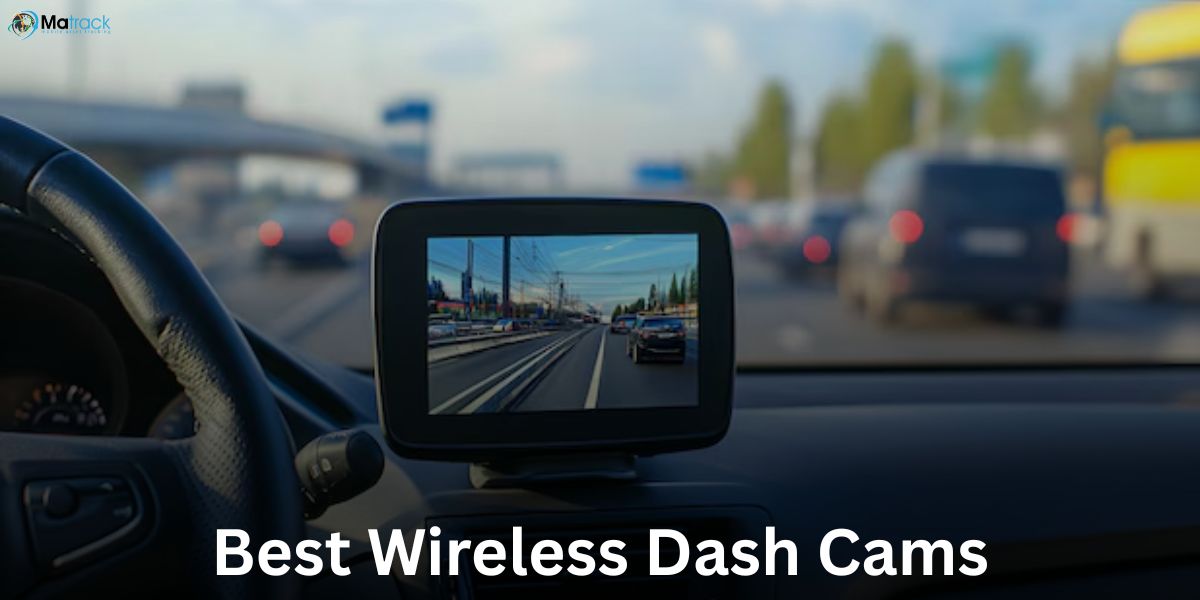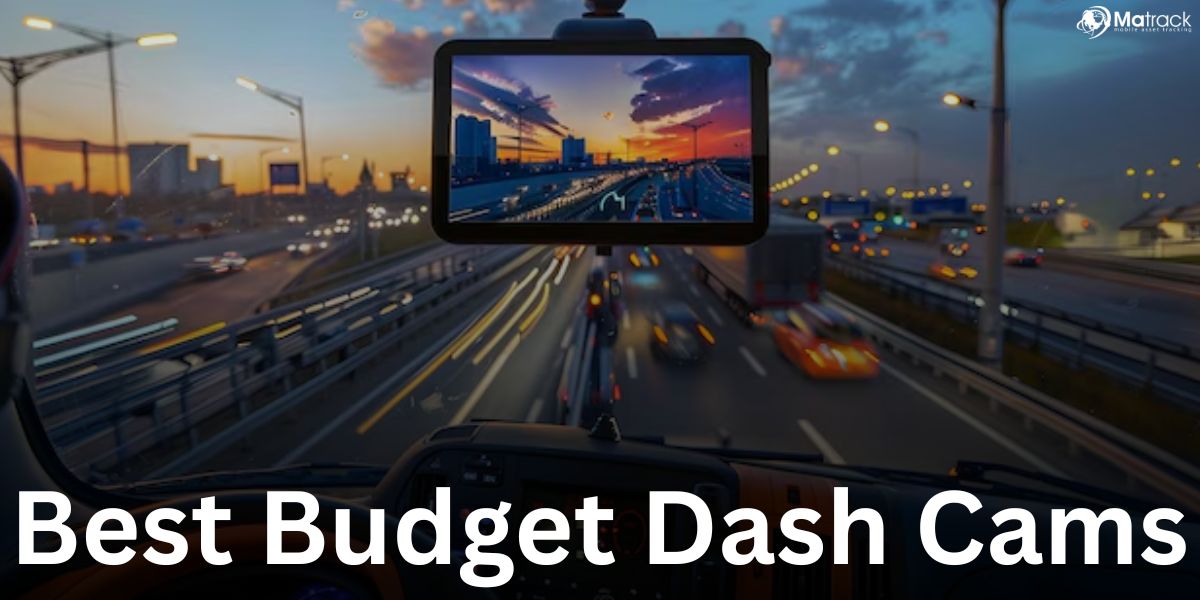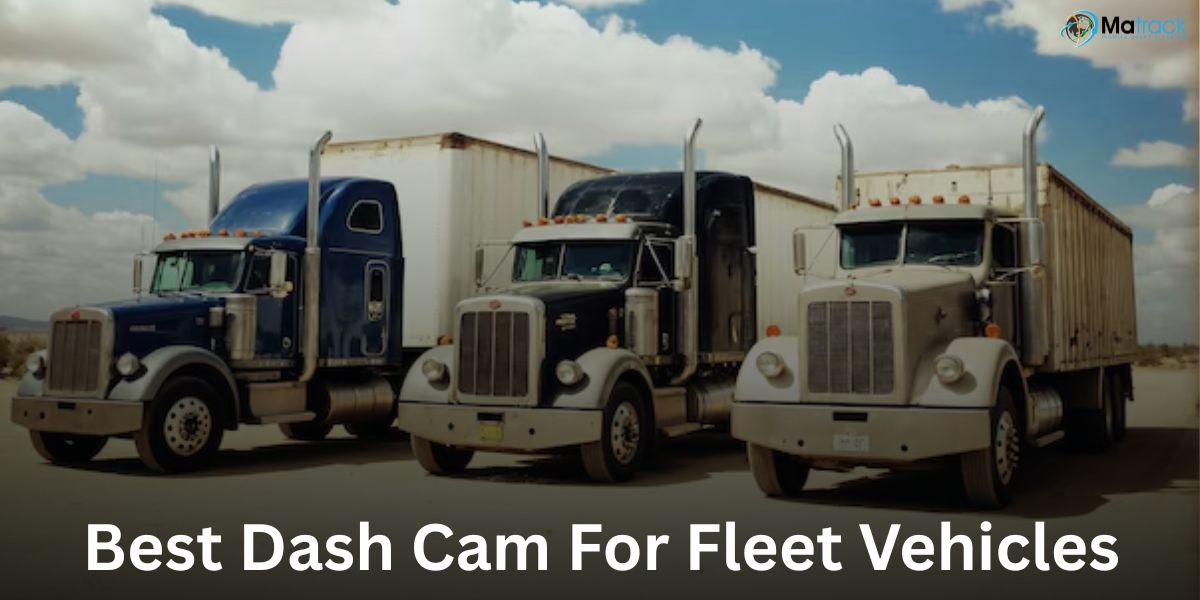Key Takeaways:
- G-sensor dash cams automatically save and lock video clips when sudden motion like collisions or hard braking is detected.
- They prevent important footage from being overwritten, making them crucial for insurance claims and parked vehicle incidents.
- Top dash cams include features like adjustable sensitivity, loop recording, parking mode, and high-definition video quality.
- Matrack’s fleet dash cam combines AI and modern technology to improve driver behavior and increase fleet safety in real time.
What is a G-Sensor Dash Cam?
G-sensor dash cam technology uses motion detection to increase road safety. A G-sensor measures sudden acceleration or force, like during a collision or hard braking.
When this happens, the dash cam saves and locks the video so it can’t be deleted. This saved clip helps prove what happened during accidents or insurance claims.
How Does G-Sensor Work in Dash Cams?
G-sensors detect changes in motion using a three-axis system:
- X-axis for lateral movement
- Y-axis for forward or backward acceleration
- Z-axis for vertical movement like bumps
During regular driving, motion remains within thresholds. The G-sensor triggers emergency response when the vehicle:
- experiences an abrupt impact
- brakes suddenly
- changes direction sharply
Once triggered, the dash cam creates a separate video file. This file is marked as an emergency clip and locked for storage.
Key Benefits of G-Sensor Dash Cam Technology
Protects Evidence Automatically
The G-sensor saves important video clips when something sudden, like a crash or sharp stop, happens. You don’t need to press any button, the dash cam does it for you right away.
Prevents Overwriting of Critical Footage
Dash cams usually keep recording over old videos. But when the G-sensor detects an impact, it locks the clip so it stays safe and doesn’t get erased.
Enables 24/7 Parking Surveillance
Many G-sensor dash cams have a parking mode that activates if the car gets hit while parked. The sensor turns on the camera and starts recording the moment it feels any bump.
Supports Faster Insurance Claims
When you have solid video proof of an accident, insurance companies act faster. G-sensor footage gives them clear details about what happened and who’s responsible.
Enhances Driver Safety
Knowing that driving behavior is being tracked makes people more careful. The dash cam captures reckless driving like, fast braking, sudden turns, and impacts, helping drivers stay alert and responsible.
Features to Look for in G-Sensor Dash Cams
Adjustable Sensitivity Settings
G-sensors should match where you drive. City roads need low sensitivity to avoid false alerts, while highways need higher sensitivity to catch real impact events.
Loop Recording with File Locking
Your dash cam must keep recording all the time but still protect key clips. A good model lets normal footage loop and saves emergency clips separately when the sensor triggers.
Parking Mode Activation
When your car is parked, a good G-sensor detects bumps and turns on the camera. Make sure the model works even when the car is off, using battery or wired power.
High-Resolution Video Capture
Clear footage is a must if you need to prove what happened. Choose at least 1080p resolution, and try to get features like night vision and a wide-angle lens.
Date-Time Stamping
Accurate time and date on every video clip help during legal or insurance issues. Make sure your dash cam stamps this info directly onto the recording.
Read More: Dash Cam Laws By States
Real-World Use Cases of G-Sensor Dash Cams
Hit-and-Run Accidents While Parked
A parked car gets hit in a shopping mall. The G-sensor records the exact time, impact direction, and may even capture the license plate of the other car.
Highway Collisions with No Witnesses
During a late-night highway drive, an unknown vehicle cuts across and causes an accident. The G-sensor locks the footage. Insurance claims are processed based on this proof.
Fraudulent Insurance Claims
Scammers stage accidents to file false claims. G-sensor dash cam footage shows pre-impact driving patterns and proves the real chain of events.
Also see: Fleet Vehicle Insurance
Types of Dash Cams with G-Sensor Technology
- Single Channel Dash Cams: Record only front view. Suitable for basic monitoring and low-risk environments.
- Dual Channel Dash Cams: Record both front and rear views. Ideal for city driving and rear-end impact cases.
- Three Channel Dash Cams: Record front, rear, and cabin view. Suitable for rideshare drivers, taxis, and fleets.
- Dash Cams with Cloud Connectivity: Send alerts and upload clips to the cloud in real-time. Useful for high-security needs.
Who Should Use a G-Sensor Dash Cam?
Rideshare and Taxi Drivers
These drivers need both inside and outside video recording. A G-sensor dash cam helps capture any incidents involving passengers or other vehicles, offering strong safety and legal protection.
Daily Commuters
People driving through busy streets face sudden stops and more chances of accidents. G-sensor dash cams provide quick access to locked footage if anything goes wrong during routine travel.
Commercial Fleet Operators
Fleet managers need constant monitoring to track vehicle use and driver behavior. G-sensor dash cams support 24/7 recording, helping with safety, training, and liability management.
Parents of Teen Drivers
A dash cam with a G-sensor helps parents check for risky driving habits. It logs hard brakes, fast turns, and sudden stops, giving peace of mind and a chance to guide safer habits.
Car Enthusiasts and Long-Distance Travelers
For those who love driving scenic routes or covering long distances, G-sensor dash cams capture memorable moments. They also protect against unexpected incidents with reliable, time-stamped evidence.
G-Sensor vs. Motion Detection: What’s the Difference?
| Feature | G-Sensor | Motion Detection |
| Detection Method | Measures changes in acceleration or force | Detects visual movement in the camera’s view |
| Activation Trigger | Sudden motion like collisions or hard braking | Any object moving into the frame |
| How It Works | Uses force sensors (X, Y, Z-axis) | Uses image processing and visual tracking |
| Recording Purpose | Saves and locks footage during impact | Starts recording when motion is seen |
| Ideal For | Crash detection and impact-proof evidence | Parking surveillance and motion near the vehicle |
| Surveillance Role | Ensures footage isn’t overwritten after impact | Wakes up the camera when motion is detected |
Buy Matrack Fleet Dash Cam
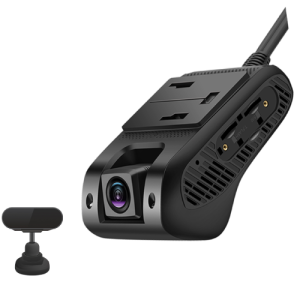
Matrack’s fleet dash cam actively improves driving habits by detecting harsh braking, speeding, and unsafe turns. It sends real-time alerts to help drivers correct mistakes before they lead to accidents.
The system identifies distractions like texting, smoking, or drowsiness using AI-powered cameras. This early warning system keeps drivers engaged and reduces risky behavior on the road.
Fleet managers get access to behavior reports and video evidence, allowing them to coach drivers more effectively. Over time, this consistent monitoring builds accountability and supports a culture of safer driving.
